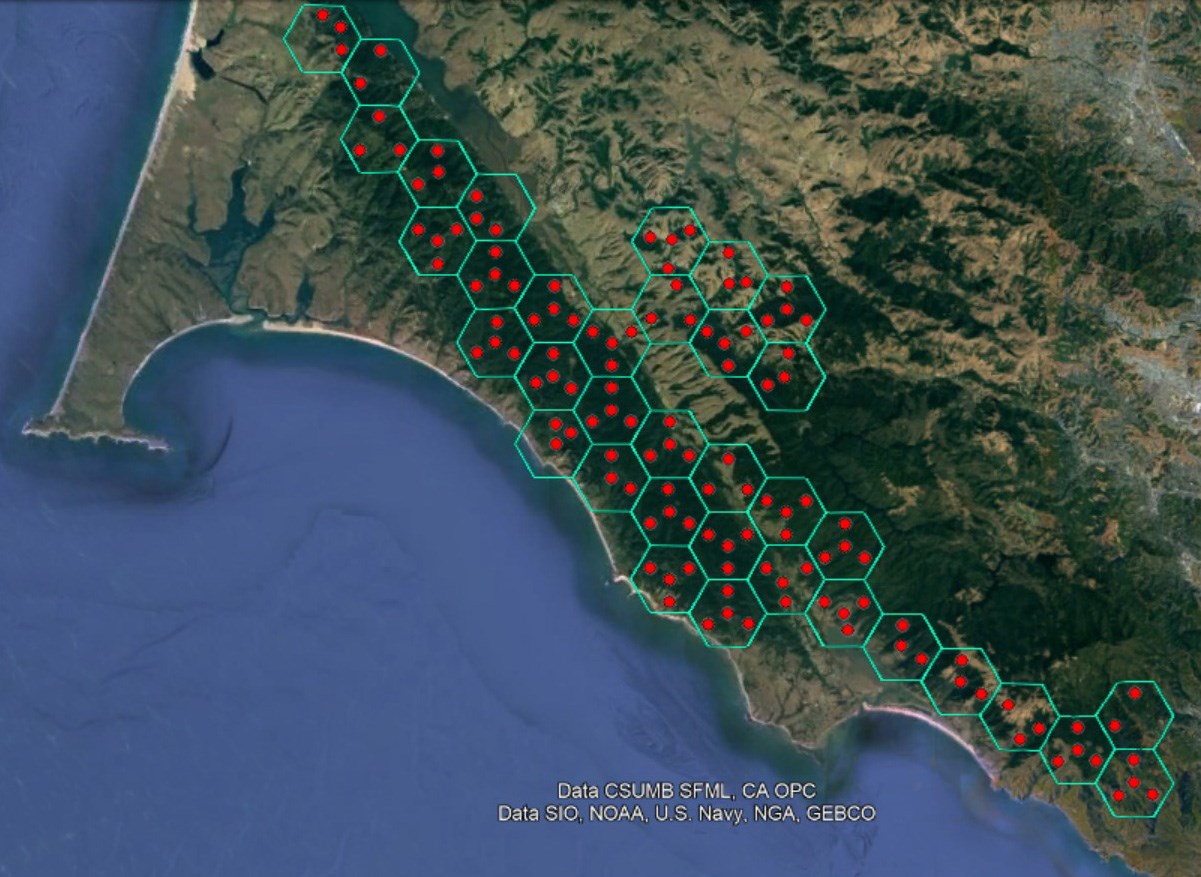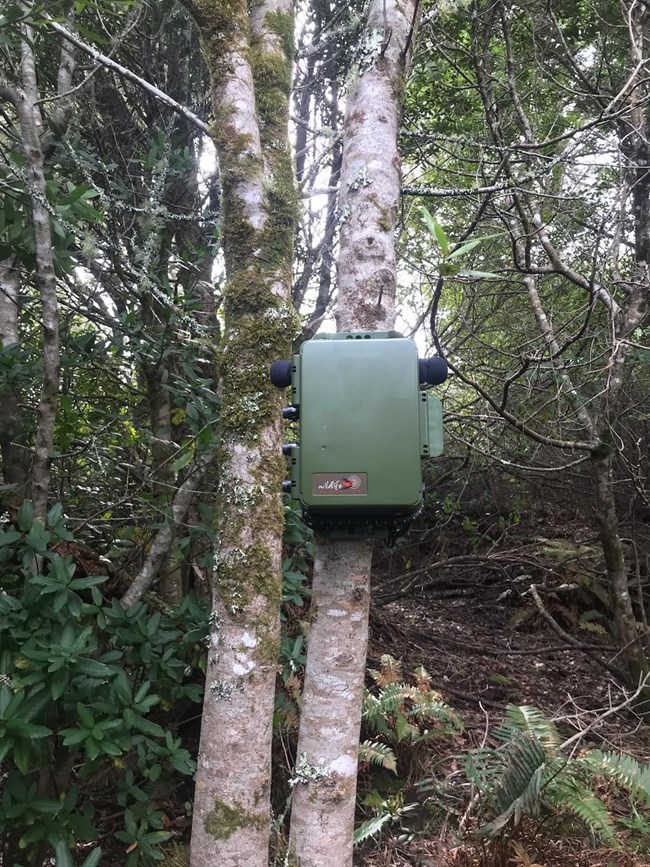Last updated: March 5, 2021
Article
Biologists Begin Acoustic Monitoring to Study Spotted and Barred Owls

NPS
February 2021 - National Park Service biologists have been monitoring federally threatened northern spotted owls in the forests of Point Reyes National Seashore and Golden Gate National Recreation Area for decades. Their methods have always relied on traditional field surveys. They repeatedly hike out to dozens of owl territories each spring, often at night, looking and listening for their study subjects. But this February, biologists began to supplement traditional surveys with a new method: remote acoustic monitoring. Biologists also received a grant to use acoustic monitoring over the next two years to conduct the first ever comprehensive inventory of invasive barred owls on park lands. Until now, this species, which represents the biggest threat to spotted owl existence, has only been recorded opportunistically in the Bay Area.

NPS
For the two-year barred owl inventory, biologists are deploying automatic recording units, or ARUs, across the landscape according to a hexagonal grid design. In 7-8 hexagons at a time, they’ll place up to four ARUs/hexagon, for three-week periods between February and July. Meanwhile, they’ll place ARUs in seven randomly selected hexagons for a longer six-week deployment to monitor spotted owls. After the deployments, biologists take the ARU recordings back to the office for analysis. They’ll use software (Kaleidoscope) that’s been trained to scan the audio files for up to 40 different bird species, including barred and northern spotted owls.
The shift towards using ARUs for northern spotted owl monitoring is here to stay, and it’s not just happening in the Bay Area. Sadly, it is being driven by the devastation that barred owls have wrought on spotted owl populations throughout most of their range. In places where there are few spotted owls left to find, traditional field surveys have been rendered inefficient and ineffective. For example, spotted owl detection rates at Olympic National Park declined from more than 70% to less than 20% over the last 20 years. So eventually, ARUs will either supplement or largely replace traditional surveys in every national park where the owls occur, and elsewhere throughout their range. Using the same methods everywhere is crucial for accurately determining the status of the whole spotted owl population.
In Marin, a full barred owl takeover has yet to materialize. Remarkably, biologists still detect spotted owls at more than 80% of monitored sites and collect lots of valuable breeding status data via traditional surveys. So at least locally, the usual spotted owl fieldwork is also here to stay.
For more information
- San Francisco Bay Area Network Northern Spotted Owl Monitoring webpage
- Pacific Coast Science & Learning Center Northern Spotted Owls webpage
- Contact Wildlife Ecologist Dave Press
Tags
- golden gate national recreation area
- muir woods national monument
- point reyes national seashore
- sfan
- pcslc
- blog
- san francisco bay area
- california
- birds
- owls
- northern spotted owl
- threatened and endangered species
- threatened species
- barred owl
- inventory
- monitoring
- acoustic monitoring
- science
- population dynamics
